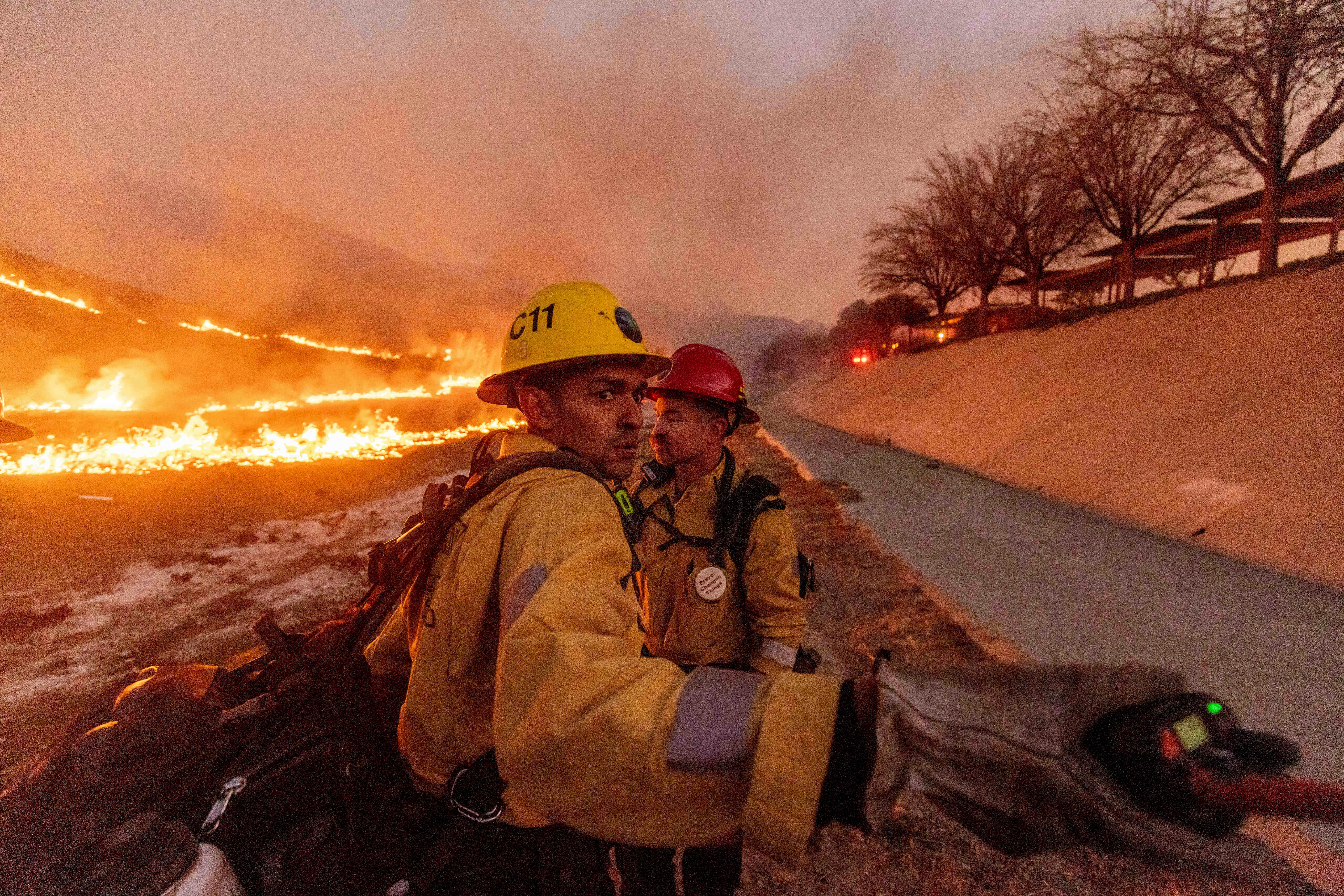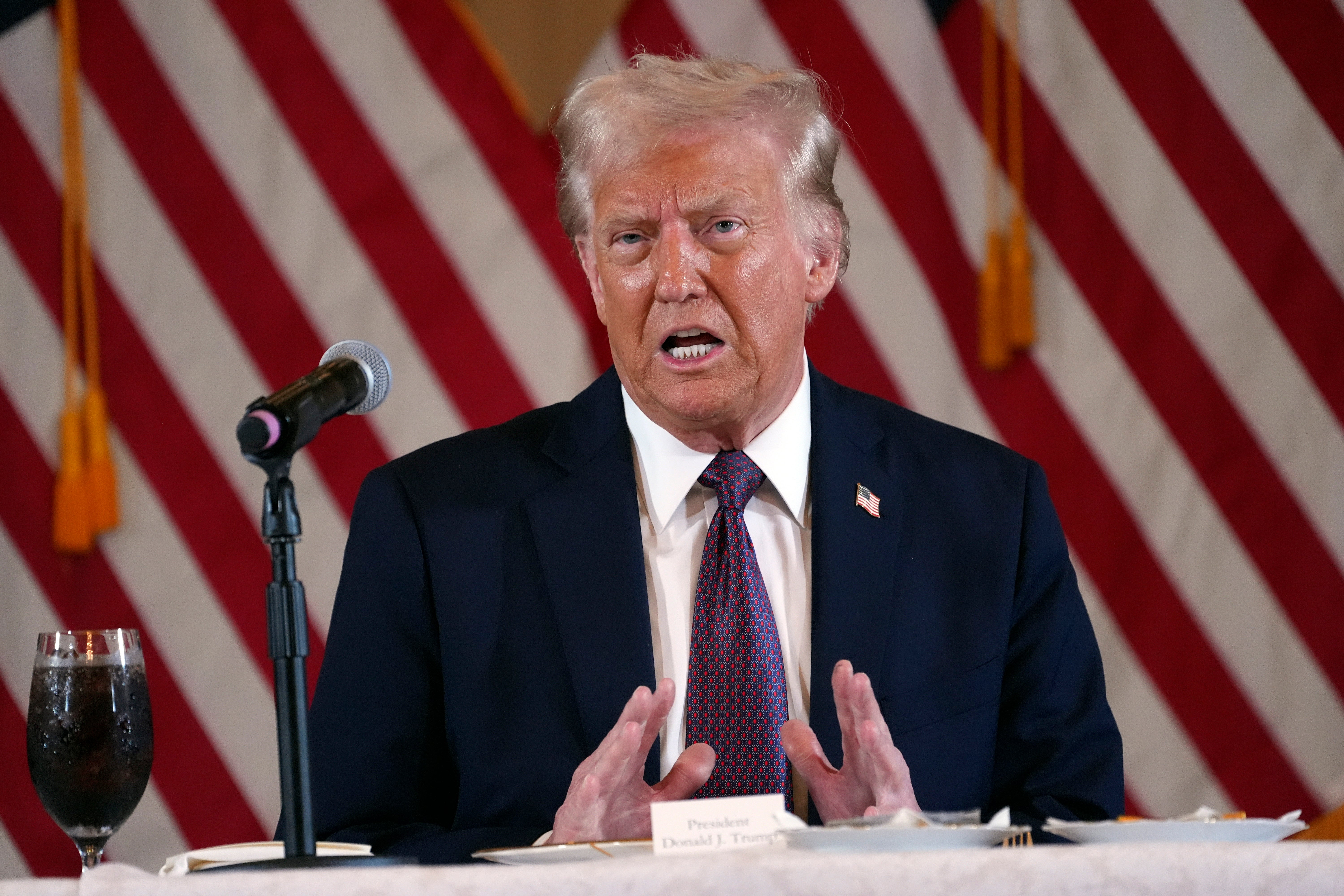As Los Angeles battles multiple fast-moving wildfires, emergency officials have faced a nightmare situation: fire hydrants running out of water.
“How do you fight a fire with no water?” Ryan Babroff, a volunteer firefighter battling the Eaton Fire, told The Washington Post.
At some point this week, up to 20 per cent of the city’s hydrants went dry, according to LA mayor Karen Bass. And on Thursday night, firefighters had stopped tapping into hydrants at all.
“Right now, we’re not utilizing the hydrants,” Kristin M. Crowley, chief of the Los Angeles Fire Department, said Thursday.
By Friday, California Governor Gavin Newsom had called for an independent investigation into the hydrant issue.
“We need answers to ensure this does not happen again and we have every resource available to fight these catastrophic fires,” he wrote in a statement on X.
Critics have sounded off on the situation from near and far.

Rachel Darvish, a resident of the scorched Pacific Palisades neighborhood, went viral after she confronted Governor Newsom over the tapped-out hydrants, insisting she would “fill up the hydrants myself.”
Meanwhile, real estate developer and former L.A. mayoral candidate Rick Caruso alleged “absolute mismanagement by the city.”
Some on the right, meanwhile, have used the shocking water shortage to attack California’s Democratic leadership and policies. Donald Trump claimed the governor’s “gross incompetence” and decision not to open up “the water main” in Northern California was to blame, while Elon Musk has argued everything from environmental protections for endangered fish to the Los Angeles Fire Department’s diversity initiatives were behind the issues with the fire response.
According to experts and government officials, the water shortage issue is much more complex.
Why is there a water shortage?
A patchwork of municipal water systems feeds L.A., drawing water from 200 different utilities. They support a system designed to handle lower-level, urban fires, not multiple large-scale wildfires descending from the hills.
“We are looking at a situation that is just completely not part of any domestic water system design,” Marty Adams, a former general manager and chief engineer at the Los Angeles Department of Water and Power, toldThe New York Times. “If this is going to be a norm, there is going to have to be some new thinking about how systems are designed.”
“It was like a worst-case scenario, but I think we should be planning for those worst-case scenarios,” Faith Kearns, a wildfire and water expert at Arizona State University, added in an interview with National Geographic. “You can’t predict everything, but also, I do think this is where we’re headed.”
Faced with a series of fires moving as fast as five football fields per minute, this system buckled.
When did fire hydrants run out?
By Wednesday, three 1 million gallon, high-elevation water tanks supplying the hard-hit Pacific Palisades went dry. High demand not only drained the tanks, and drew from water that would’ve been used to replenish them, but it also lowered pressure within the overall hydrant system, further straining the ability of firefighters to quickly get water.
“We had a tremendous demand on our system in the Palisades,” Janisse Quiñones, chief engineer at Los Angeles Department of Water and Power, said at a Wednesday briefing. “We pushed the system to the extreme.”
Some of that demand would’ve been met by a 117 million-gallon reservoir complex in the Pacific Palisades, but it sat out of use for repairs as the fires in the Palisades began. Officials estimate that had the Santa Ynez Reservoir been online, it would’ve cut demand on the area’s water system from four times to three times as high as normal.
“You still would have ended up with serious drops in pressure,” former Department of Water and Power general manager Adams toldThe Los Angeles Times. “Would Santa Ynez [Reservoir] have helped? Yes, to some extent. Would it have saved the day? I don’t think so.”
Making matters worse, the high winds that helped spread the fires also temporarily prevented officials from using aerial drops of water which could’ve been pulled from the ocean or Southern California’s reservoirs, which are currently sitting above historical levels.

And, as President Biden noted on Thursday, loss of electricity put up yet another impediment to getting water to hydrants, as blackouts impacted pumping systems.
Why did the water shortage cause electrical issues?
California Rep. Judy Chu told CNNNews Central on Friday that a FEMA administrator informed her that “they had to turn down the electricity in order to make sure that the fire wasn’t aggravated because of the electricity.”
“They need electricity in order to pump water. So, they turned that down,” she explained. “And then, at the same time, there were so many hydrants that were being used all at once. That aggravated the situation. In addition, they said, there are homes that have been devastated where the water wasn’t turned off. So, there actually are homes where the water is just pouring out and they have to go home by home to turn it off.”
Chu added that the situation is “in hand right now.”
Other fires, like the 2023 Maui fires and the 2017 Tubbs Fire in Northern California, have caused hydrants to go dry in the past, and it seems L.A. will need to go back to the drawing board if these kinds of wildfire-scale urban blazes become the new normal.
“There is a theoretical world, and maybe a world we’re entering into, where we could pay much, much more to have redundant water and power supply — because you need both [to fight fire], especially in terrains like this,” Greg Pierce, director of the UCLA Water Resources Group, told LAist. “I’m not even sure that would have made a difference when it comes to these types of wildfires, but that’s possible.”
“There’s no reason to think that [the Department of Water and Power] was particularly ill-prepared, no one was talking about them being ill-prepared for wildfires,” he said. “This caught everyone off guard, as far as I know.”
As the city seeks to fight the fires and rebuild, California leaders have sharply condemned outsiders trying to score political points.
“People are literally fleeing. People have lost their lives. Kids lost their schools. Families completely torn asunder. Churches burned down. And this guy wanted to politicize it,” Newsom said in response to Trump on CNN.







